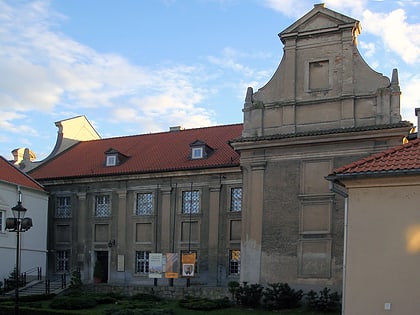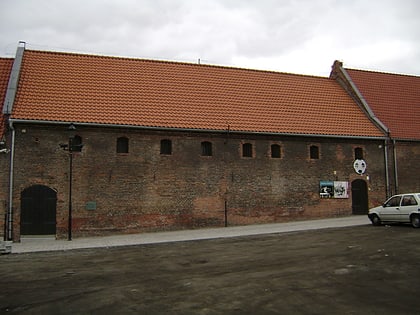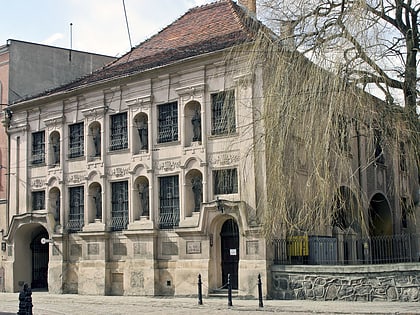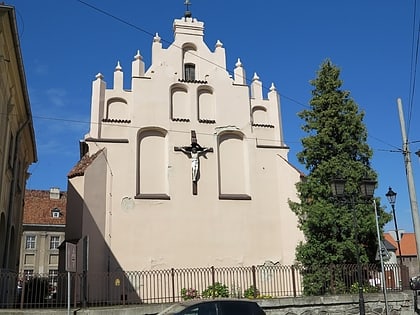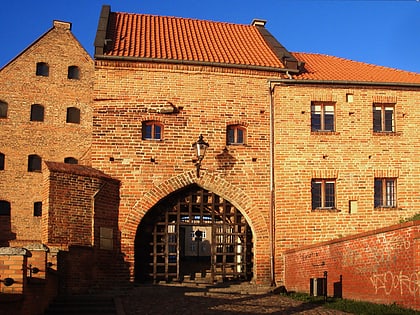Muzeum im. księdza doktora Władysława Łęgi, Grudziądz
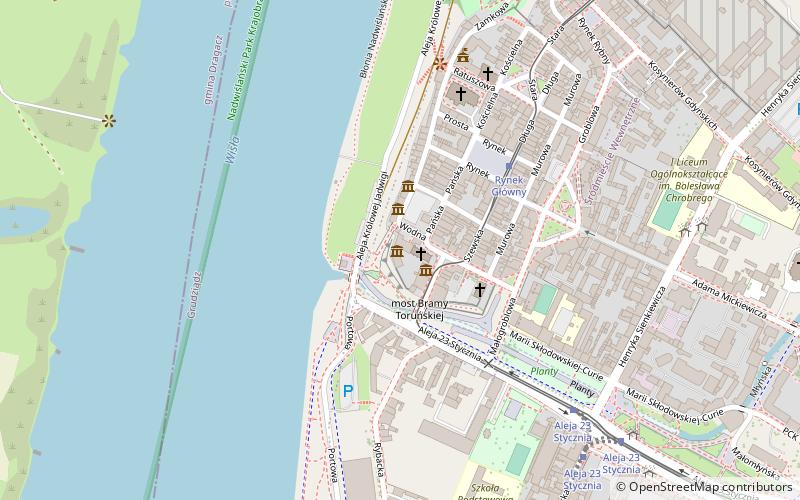

Facts and practical information
Rev. Dr. Władysław Łęga Museum in Grudziądz - museum founded in 1884 in Grudziądz, since 2005 it has been named after Władysław Łęga.
In 1883, the Society of Antiquities was established in Grudziadz, with Dr Siegfried Anger, the director of the grammar school, as its president. One of the goals was to organize a museum. The opening of the City Museum of Antiquities took place on June 15, 1884. Initially, it had 741 exhibits, exclusively in the field of archaeology, coming from several local private collections. In 1890 it occupied 3 rooms and had 3116 historical objects from various fields. Due to the lack of sufficient space, in the years 1893-1899 the collections were stored in the Classical Gymnasium in Sienkiewicza Street, and in 1897 the museum was moved to the new town hall in the former Jesuit college, where on 23 June 1896 a permanent exhibition was opened in the representative - though still insufficient - refectory hall. Since 1904 efforts were made to build its own seat, which was possible thanks to a generous bequest in the will of Gustav Roethe from Berlin, a former publisher of a large-circulation German newspaper Der Gesellige. The activities of the museum were supported, among others, by the bookseller and publisher Arnold Kriedte. The opening of a new representative building in Legionów Street, which also housed the municipal library, took place in 1911. In the reborn Poland, between 1921 and 1939, the Museum and the City Library successfully developed under the management of the People's Reading Society, and since 1922 the honorary curator of the collection was Rev. Dr. Władysław Łęga. During the German occupation from 1940 to 1945 the City Museum existed and its character was subordinated to the immediate goals of the Nazi political propaganda. After the war only 1/3 of the collections survived. Since 1956 the museum has been housed in the building of the former Benedictine convent at 3/5 Wodna Street, which was rebuilt after the war. In 1961 the museum underwent significant reorganization, and in the following years it was joined by historic granaries and the so-called Abbesses' Palace, which housed more exhibition rooms.
The museum comprises the following departments: History Department, which focuses on the history of the town, and since 1991, in the Rooms of Polish Cavalry Tradition, it has been presenting the achievements of the interwar Cavalry Training Centre. The Department of Archeology documents the prehistory of Chełmno land, presents unique findings from the medieval knight's stronghold in Plemięty and medieval jewelry from Gruczno.
The core of the Art Department's exhibition is the Gallery of Contemporary Pomeranian Painting, established in 1961.
The collection also includes numerous works documenting the iconography of old Grudziadz and the surviving relics of the sculptural furnishings of the local Reformed church. The Department of Ethnography documents the folk culture of the Pomeranian region, but also contains interesting relics from the Hutsul region. In 1951 the Ministry decided to transfer the valuable collection of the Far East to the State Ethnographic Museum in Warsaw. There is also Numismatic Cabinet and Scientific and Educational Department. In 1945-1958 the head of the Museum was Józef Błachnio, in 1958-1960 Herbert Wilczewski, the director in 1960-1965 Zbigniew Czerski,1965-1979 Jerzy Feldman, 1979-2008 Ryszard Boguwolski, 2009- 2014 Małgorzata Kurzyńska, and since 2015 Wioletta Pacuszka.
The museum not only hosts permanent and temporary exhibitions, but also chamber concerts, operates a scientific library, conducts archaeological research and publishing activities. It also conducts fruitful cooperation with the German Museum of West Prussia in Warendorf. Since May 13, 2005. The museum in Grudziadz is named after its pre-war honorary curator, a clergyman and an outstanding scientist, Rev. Dr. Wladyslaw Lega.
Muzeum im. księdza doktora Władysława Łęgi – popular in the area (distance from the attraction)
Nearby attractions include: Stara Kuźnia, Spichlerz, Pałac Opatek, Kościół pw. Ducha Świętego.
Frequently Asked Questions (FAQ)
Which popular attractions are close to Muzeum im. księdza doktora Władysława Łęgi?
How to get to Muzeum im. księdza doktora Władysława Łęgi by public transport?
Tram
- Rynek Główny • Lines: T2 (4 min walk)
- Aleja 23 Stycznia • Lines: T2, T3 (7 min walk)
Bus
- PKS Grudziądz (20 min walk)
- Chełmińska/Bydgoska • Lines: 10, 9 (30 min walk)
Train
- Grudziądz (23 min walk)
- Grudziądz Przedmieście (30 min walk)
